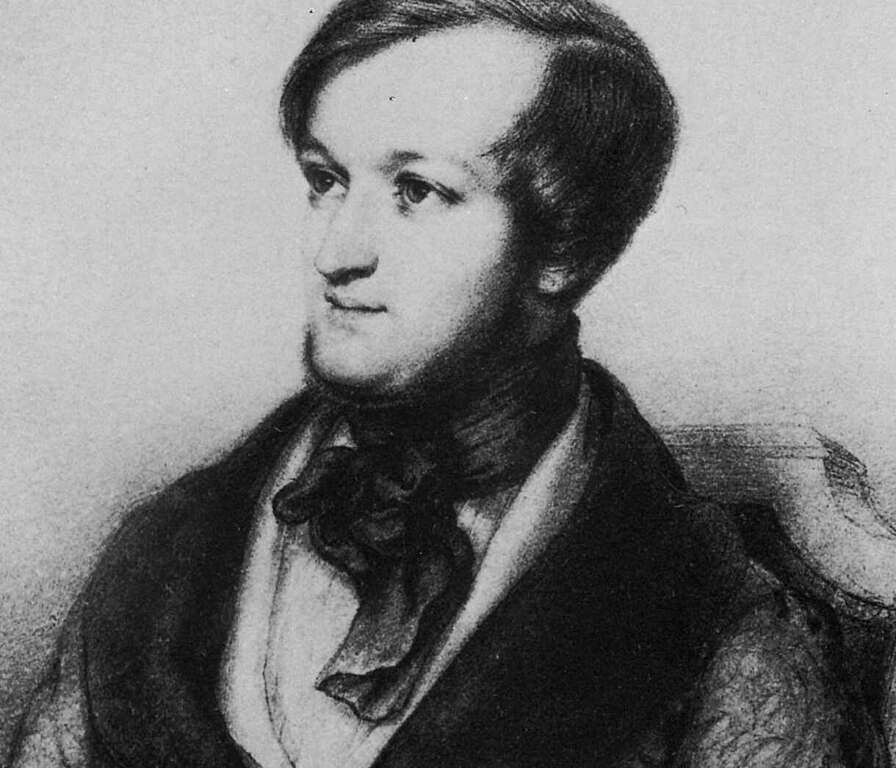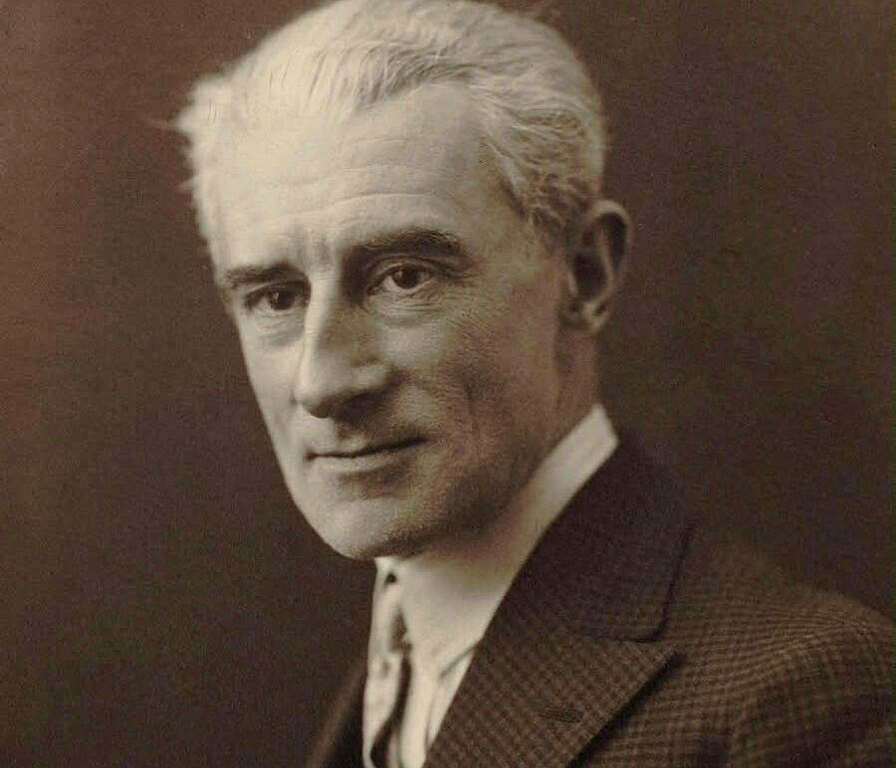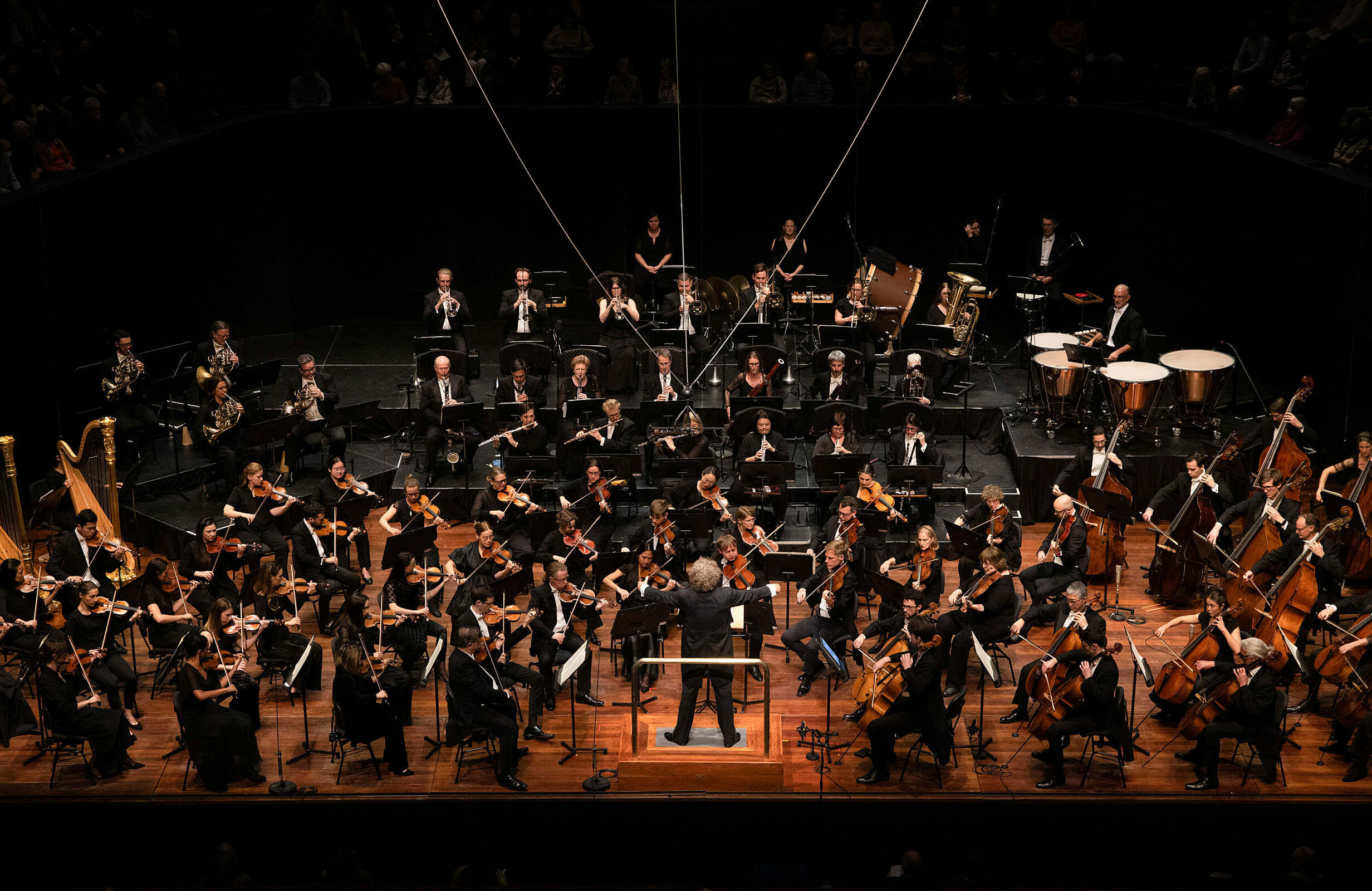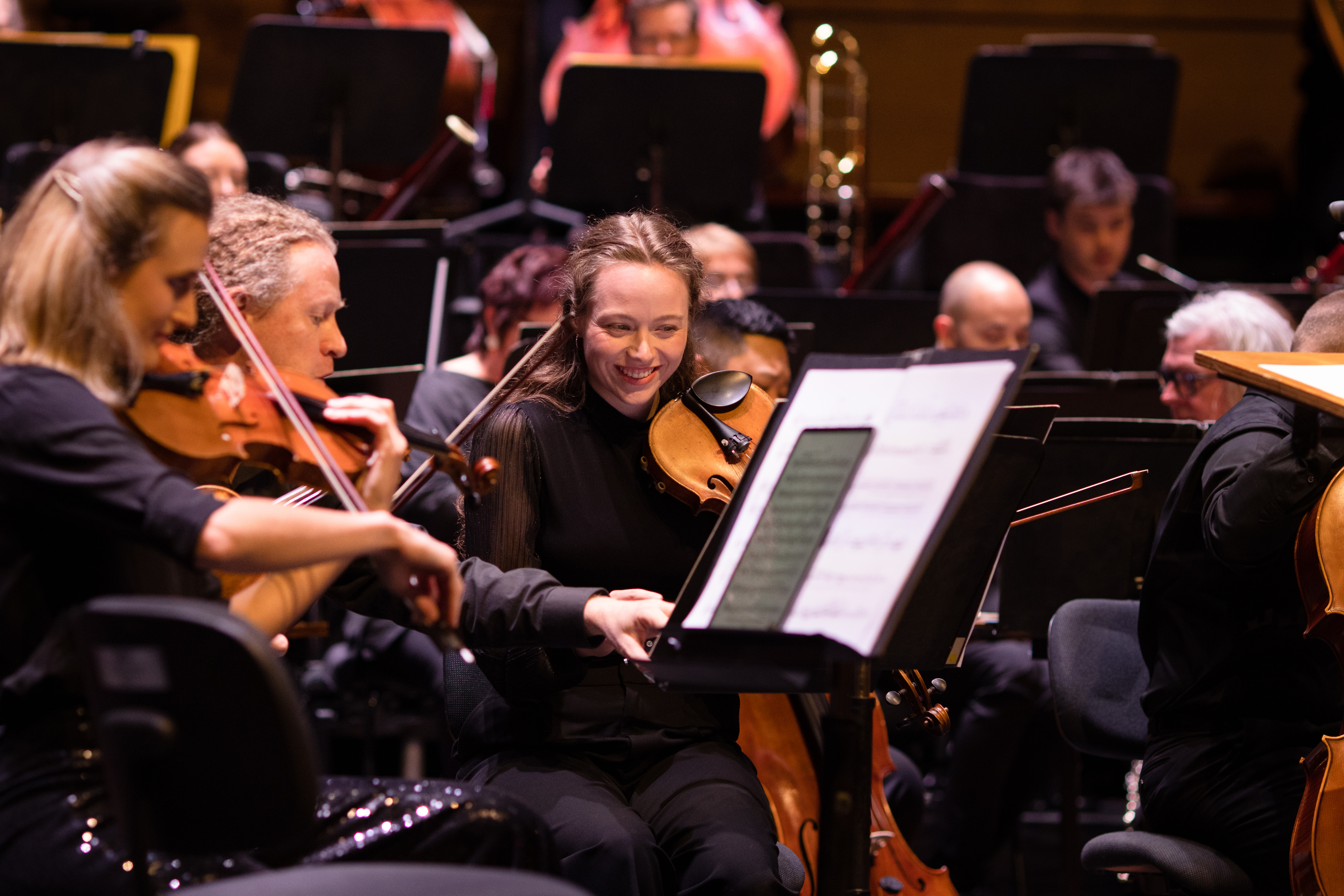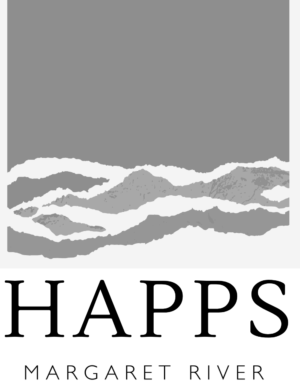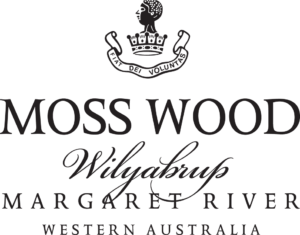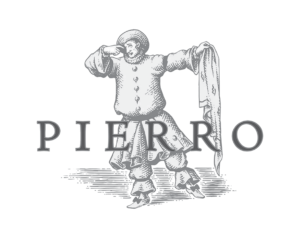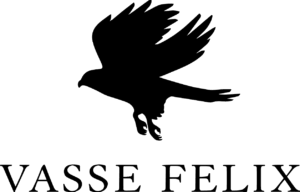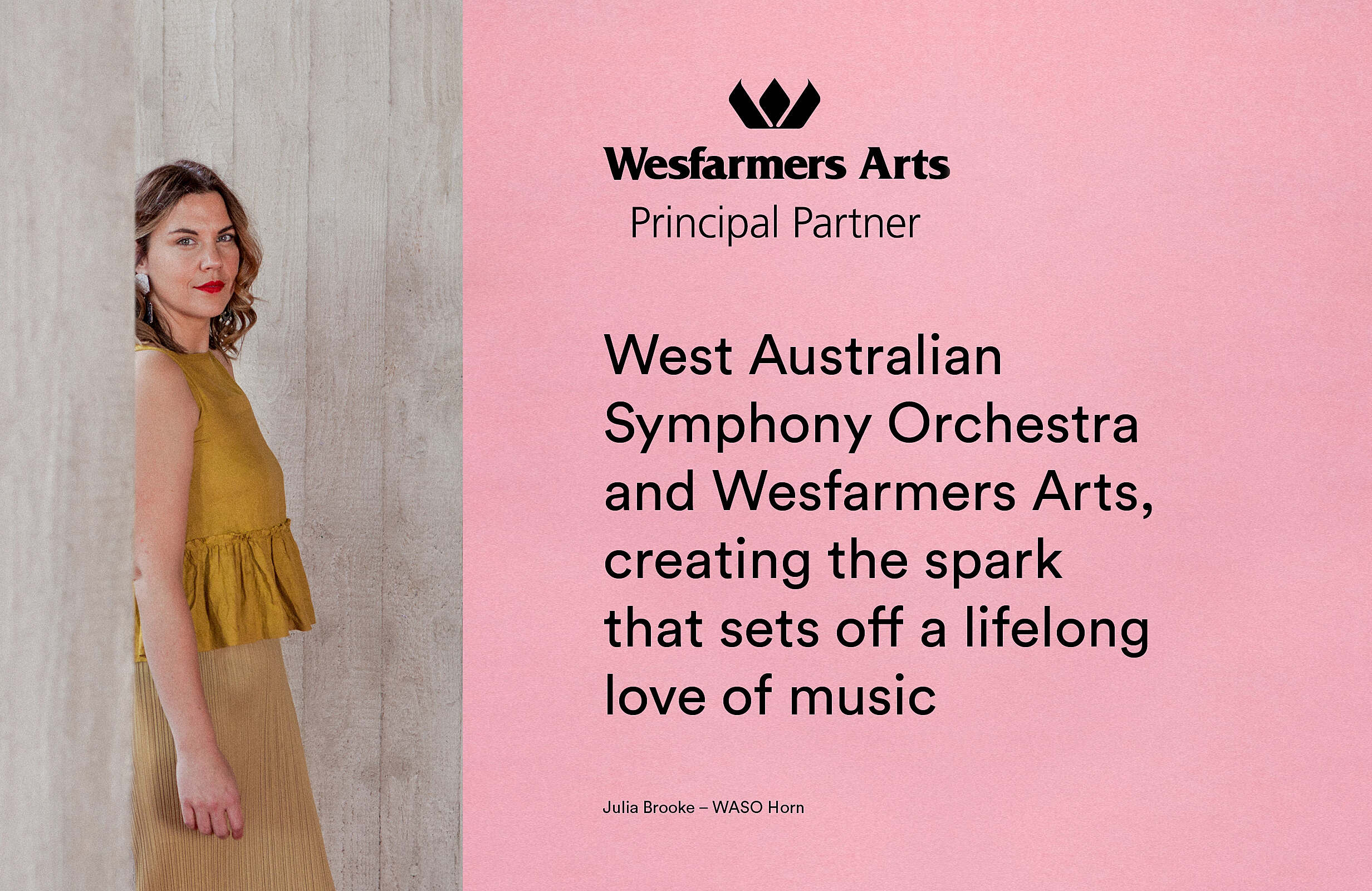La Mer
MACA SYMPHONIC SERIES
Friday 29 & Saturday 30 August 2025, 7.30pm
Winthrop Hall, UWA
West Australian Symphony Orchestra respectfully acknowledges the Traditional Custodians and Elders of Country throughout Western Australia, and the Whadjuk Noongar people on whose lands we work and share music.
How to use your Digital Program
La Mer
Richard WAGNER The Flying Dutchman: Overture (11 mins)
Paul STANHOPE Mahāsāgar (World Premiere) (33 mins)
I Nara Koort
II Lifesaver
III Silentio ad mare
IV The Osprey
V High tide for Healing
Interval (25 mins)
Maurice RAVEL Une barque sur l’océan (8 mins)
Claude DEBUSSY La Mer (23 mins)
De l’aube à midi sur la mer (From Dawn to Noon on the Sea)
Jeux de vagues (Play of Waves)
Dialogue du vent et de la mer (Dialogue of the Wind and the Sea)
Asher Fisch conductor
Sara Macliver soprano
Andrew Goodwin tenor
WASO Chorus
Aquinas College Schola Cantorum
Asher Fisch appears courtesy of Wesfarmers Arts. Paul Stanhope’s Mahāsāgar commissioned for WASO by Catherine Dunn and members of the WASO Chorus.
Wesfarmers Arts Digital Pre-concert Talk
Listen to your digital pre-concert talk below. For more information on this week's speaker, Paul Stanhope, see About the Speaker.
Listen to WASO
This performance is recorded for broadcast on Wednesday 22 October, 1pm (AWST) on ABC Classic. Date subject to change. For further details visit abc.net.au/classic.
Wesfarmers Arts Digital Pre-concert Talk
WASO On Stage
About the Artists
About the Artists
About the Artists
About the Artists
About the Artists
About the Music
About the Music

Paul Stanhope
(b.1969)
Mahāsāgar
I Nara Koort
II Lifesaver
III Silentio ad mare
IV The Osprey
V High tide for Healing
For soprano and tenor soloists, SATB chorus, children’s chorus and orchestra. Commissioned for the West Australian Symphony Orchestra by Catherine Dunn and members of the WASO Chorus.
Composer’s Note
Mahāsāgar is the Hindi word for the Indian Ocean. This piece in five movements for chorus, soloists and orchestra was envisioned to be in the tradition of compositions about the sea but with the unique perspective of looking west across Mahāsāgar. The piece considers themes of the ocean’s beauty and power, its dangers and sense of identity drawn from the West coast. The creation of new texts by West Australian poets Cass Lynch and Steve Hawke was an important element in its construction, adding to some existing works of literature in order to create a unique journey that takes in both local scenery and universal concerns.
I Naara koort
The piece begins as though the sea is breathing, with the sounds of waves imitated by the chorus inhaling and exhaling, added to by layers of percussion and static chordal sonorities from muted brass, high strings and a rippling bass clarinet. The chorus enters with a ‘shallow wave’ motif that appears in various guises throughout the whole score. Carefully crafted phrases in language by Kureng Wudjari Noongar poet Cass Lynch, evoke sounds that have been heard for hundreds of generations. I’ve tried to evoke the unique sense of place created by Cass with a sweeping, but relatively brief, wave-like surge which pushes musical elements forward like the tide. As the music heads ever higher in the orchestra, the crest of this musical wave tips back to gentler iterations before moving quickly into the second movement.
II Lifesaver
Elizabeth Riddell’s poem Lifesaver first appeared in The Bulletin newspaper in March 1931. It might be seen as part of an artistic trend where aspects of Australian identity are forged around coastal imagery, similar to the stylised beach paintings by Charles Meere from the same decade. In Riddell’s poem, a tanned-skin man is brought up, drowned from the sea, after an attempted rescue by a Lifesaver. The music dramatises the scene with fast, surging patterns and loud surf rumbling with heart-beat like pulses in the timpani. Added to this are swirling patterns in the strings and urgent repeated stabs in the brass. A declamatory style is used in the choir to highlight the dramatic scene, followed by the introduction of the soprano solo detailing the image of sun and water trembling down the youth’s body. The middle stanza is such by the tenor solo in more sombre and reflective tones, before the soprano and chorus join in describing dreamlike imagery of underwater worlds. The third section of the piece recommences in the declammatory style heard earlier, moving gradually towards more sinister sounds. The heart-beats from the timpani transform a funeral march with the sounds of bells tolling.
III Silentio ad mare
This remarkable poem was written by two then 11-year-old school students, Alexander Maloof and Rhys Halkidis and which won them the 2012 Dorothy Mackellar Award for poetry. One of the judges noted: “These two young Australians demonstrate that they clearly understand the challenge of the refugee who leaves everything behind and seeks safety somewhere else in an unknown place.” This poem created an opportunity for me to write a boat song for the 21st century. The atmosphere in the poem is tense and claustrophobic and is sung by the tenor soloist, alternating with the choir. In between verses, a children’s choir sings a verse from one of Michael Leunig’s prayers “God bless this tiny little boat”, capturing the innocence of the young trapped on a dangerous voyage beyond their control. When I sent the idea to Michael Leunig asking his permission to use his prayer, he immediately said yes, sensing the importance of the combination of ideas. I’m only sorry that Michael died before being able to hear it. As the tension in the piece mounts with layers of soloist, children’s choir and SATB chorus overlapping, it builds to a broken off sentence: “When the flashing lights appear at sea…”. At this point all anxieties of what these flashing lights could mean are manifested in an orchestral interlude which mimics machine-like sounds of large coastal military vessels, complete with blaring horns, bells and chugging motor rhythms. Repeated figures accelerate gradually into double tempo and double again like gears moving ever upwards. After this anxious interlude plays out, the danger seems to have passed and the sentence is completed with a still picture of all on the boat keeping quiet while the boat creaks. A sense of relief is palpable in the setting of the title text Silentio ad mare (silence at sea) in a sort of chorale with a child’s solo at the very end.
IV The Osprey
A more uplifting movement, The Osprey is the third collaboration by myself and Perthbased writer, Steve Hawke. I’ve always loved Steve’s imagery of birdlife and I requested him to create something especially for this piece – in this case a poem about a sea hawk (quite appropriate!) or osprey. Having sojourned to the Kimberley with Steve previously, the birdlife up in the northern reaches of Western Australia makes quite an impact. In this movement, the solo soprano sings the part of Ann, a passionate twitcher, fascinated by the darting expertise of the seabird who glides skillfully over waves, catching its prey. The chorus sings the perspective of the Osprey, who never seems to tire of the thrilling sensation of flying, while getting about the daily duties of hunting and feeding his young. The Osprey also observes Ann below and the two creatures carry out a sort of magical dialog. Throughout the movement, the orchestra imitates various aspects of bird life, from the Osprey call in the solo violin, through to strange bird-like choruses in the woodwinds and xylophone: the glorious cacophony of the Kimberly on wild display. After Ann and the Osprey observe together the slow sinking of the sun, the music moves into a final episode where the Osprey looks forward to another day enjoying the ‘boundless freedom of the skies’. This is accompanied by exuberant choral and orchestral writing in fanfare-like passages. After a huge climactic build up, the chorus is released to sing ‘freedom’ quietly to itself. This leads directly into the final movement.
V High Tide for Healing
The music of the very opening returns including similar repetitions of the Noongar phrases in of the first movement, this time with English-word elaborations, bringing new perspectives to the material. Whereas the musical wave surges forward in the first movement, here it recedes to calmer territory to match the concepts of healing and reflection. Quiet chorale-like passages for the choir and soloists are heard before the return of the ‘sea breathing’ heard in the very opening of the piece, bringing the large wave-like arch structure to a close.
© Paul Stanhope, June 2025.
World premiere performance: 29 August 2025. Asher Fisch, conductor.
Instrumentation: two each of flutes (2nd doubling piccolo), oboes (2nd doubling cor anglais), clarinets (2nd doubling bass clarinet) and bassoons (2nd doubling contrabassoon); four horns, three trumpets (1st doubling piccolo trumpet), three trombones and tube; timpani, two percussion, harp, celesta and strings.
WASO acknowledges the contributions of the writers whose new and existing works form the base text of Paul Stanhope’s Mahāsāgar, including Cass Lynch (Seashore heart, written in response to Indian Ocean by John Kinsella, used in movements I Nara Koort and V High Tide for Healing), Elizabeth Riddell (Lifesaver, used in movement II Lifesaver), Alexander Maloof and Rhys Halkidis (Silentio ad mare, used in movement III Silentio ad mare), Michael Leunig (God bless this tiny boat, used in movement III Silentio ad mare), and Steve Hawke (The Osprey, used in movement IV The Osprey).
Mahāsāgar: Text & Translation
Mahāsāgar: Text & Translation
Mahāsāgar: Text & Translation
Mahāsāgar: Text & Translation
Mahāsāgar: Text & Translation
About the Music
About the Music
About WASO
About the Speaker
Your Concert Experience
Perth Concert Hall Redevelopment Update
WASO in the Community
Supporting WASO
Our Supporters






